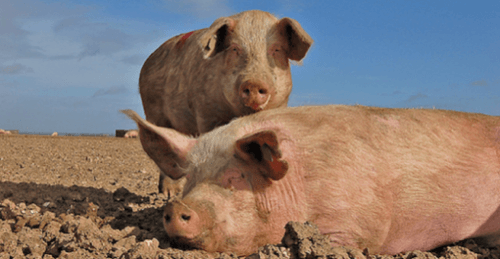
If you can’t beat ’em, charge ’em: Not long ago, AT&T execs criticized smartphone users as data hogs. Not anymore. With a series of new pricing plans, both AT&T and its archrival Verizon have decided that digital gluttony is good for business. Now the carriers are looking like the hogs themselves, only they’re gorging not on bandwidth but on the contents of their customers’ wallets.
A month after Verizon introduced a wireless plan that allowed users to share data across multiple devices, AT&T has followed suit. Like Verizon, AT&T designed its new prices to generate more revenue the more people use high-bandwidth apps on their smartphones and tablets. Like Verizon, AT&T charges fees for voice and text even if they go unused. And both companies’ shared data plans charge 50% more per gigabyte in overage fees.
And that’s where the carriers’ hog-like behavior comes into play. No longer are so-called data hogs the 3% of wireless customers who use 40% of the data. Thanks to Netflix, YouTube, online games and apps like Skype, on LTE networks the mainstream customer graduates into a high-bandwidth user. Anyone who upgraded to the new iPad on an LTE network became, overnight, a video hog. Many people will be surprised to discover they’re paying expensive overage fees, and so they’ll logically move into higher-priced usage tiers. Either way, AT&T and Verizon will benefit.
And so, five years after the iPhone kicked off a surge in demand for wireless data, the wireless duopoly of AT&T and Verizon is learning to love data hogs. AT&T CEO Randall Stephenson said as much at Fortune’s Brainstorm Tech conference this week. “We’ve gotten the pricing model right,” he said, “so I don’t think of them as hogs.”
Here’s how Stephenson explained it in detail:
“I’ve kind of conditioned people to think of it this way: We have gotten ahead of the capacity glut here. Now we have a spectrum crunch coming, but I believe the industry has gradually and finally gotten the pricing model right. Once you get the pricing model right, I don’t think of them as bandwidth pigs or hogs. I think of them as services and revenue. It’s not all bad; in fact, data becomes a good thing.”
There are a few things in Stephenson’s comments that should make AT&T customers uneasy. The company that once considered its biggest customers hogs now describes them openly in even more impersonal terms: revenues. And Stephenson is “conditioning” his workforce to see customers the same way. Wireless subscribers aren’t people who love your service – they are pockets of dollars to be fracked by any means necessary.
Stephenson also says with the new shared wireless plans, the industry has gotten pricing right. But what’s right for AT&T isn’t right for its revenues – I mean, customers. The new plans represent an attempt to condition consumers into accepting higher bills. And unless customers are willing to move to a second-tier carrier like Sprint or T-Mobile, they have no choice but to accept plans designed to squeeze money out of them.
Of course, as Stephenson pointed out at the Fortune conference, carriers are spending billions on new LTE networks. AT&T is investing $20 billion this year in networks and other capital expenditures. So, he says, a company with growing capex spending and flat revenue isn’t a sustainable business model.
This would make sense, except that it’s disingenuous at best and untrue at worst. The cost of those new networks will be amortized over years, and AT&T has been seeing $19 billion in amortization costs for the past three years. What’s more, AT&T is spending even more heavily in other areas: nearly $40 billion on marketing and administrative costs, and $10 billion a year in dividends for investors. Why not spend less on marketing and investors to cut customers a break?
Yet AT&T is moving in the other direction. A customer-friendly approach would be to let them choose an à la carte plan based on how they use their smartphones. Those who don’t make many voice calls or who send texts through programs like iMessage should be able to cancel voice and data plans we don’t use. And why not abandon tiers and let people simply buy data per unit used, like gasoline vendors do with fuel for cars?
For years, Verizon and AT&T have used their carrier muscle to force changes that are better for their own profits than their customers’ needs. In a thoughtful piece, the Verge called them the biggest threat to innovation, citing the imperious demands they place on phone manufacturers. This week, 9To5Mac found evidence that AT&T may charge for using FaceTime on its wireless networks. (Stephenson didn’t deny this when he was asked about it, but his bizarre response – “I’ve heard the same rumor” – made him sound sadly out of touch.)
With the new pricing plans, carriers are trying to control consumers as they have controlled phone makers for years. The result will be more profits for carriers and richer dividends for investors. But it will also make for a worse wireless world for everyone else. High-bandwidth apps with innovative potential will languish with smaller audiences, and the mobile web will stratify into upper and lower classes, where the rich enjoy the best features.
There are two kinds of innovations in tech. One that is often celebrated – the creation of great new things people will gladly pay for – and another that few companies will brag about – finding new ways to get people to pay for something they already have. The top two carriers are innovative in the second way. Only now, AT&T’s Stephenson likes to brag about it.
Image licensed via Creative Commons, courtesy of rajthesnapper.

















